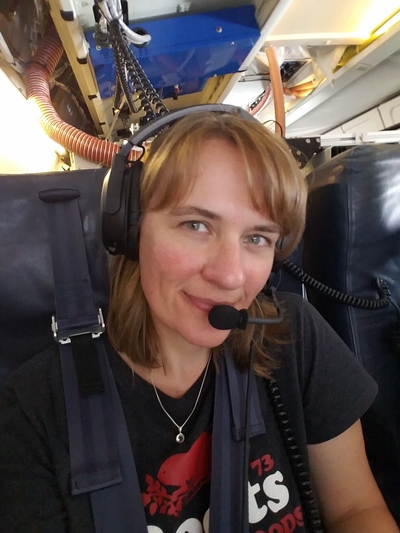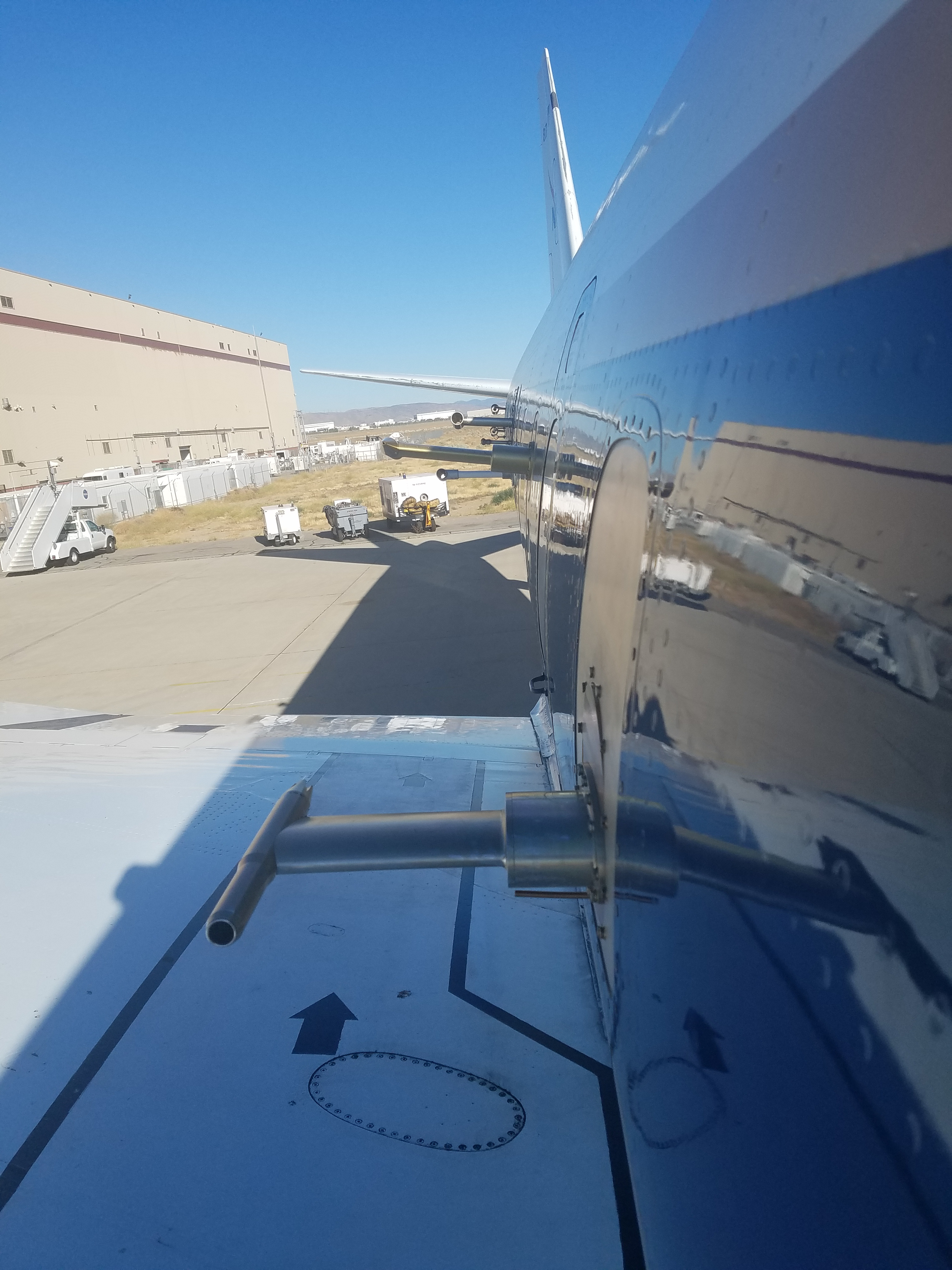Profile in Science: Rebecca Hornbrook
Science
Project Scientist Rebecca Hornbrook was busy this past summer; busy traveling to Palmdale, California, Boise, Idaho, and Salina, Kansas to fly on the NASA DC-8 research aircraft for the joint NASA/NOAA FIREX-AQ field campaign. Rebecca is a member of the VOC Measurement Group at ACOM, who developed and operate the Trace Organic Gas Analyzer (TOGA). TOGA measures in situ volatile organic compounds (VOCs) ranging in size from HCN and formaldehyde to monoterpenes. The primary goal of FIREX-AQ was to sample the smoke plumes emitted by wildfires and agricultural fires. What chemicals are in wildfire smoke? Carbon dioxide, carbon monoxide, and black carbon are emitted by biomass burning, of course, but alkanes, aromatics, nitriles, alcohols, and aldehydes are also present. Using their new Time-of-flight (TOF) mass spectrometer, Rebecca and the rest of the VOC group consisting of Project Lead Scientist Eric Apel and Project Scientist Alan Hills, strove to increase the number and accuracy of the 60-70 unique trace gases already measured by their TOGA systems.
The DC-8 aircraft was loaded with scientific instruments, their inlets protruding from what would normally be the passenger windows of the main cabin (Figure 1). Rebecca spent many flight hours sitting behind the TOGA rack, monitoring the incoming data, making sure TOGA-TOF was operating correctly, and performing small adjustments to the data acquisition software when necessary (Figure 2). In the evenings, she would review the latest data on her laptop in her hotel room, process files, assess the data quality, and check for possible sampling issues that might need to be addressed during the next flight, or on the following maintenance day. The next morning the flight planning team would meet at 07:00, armed with the most recent satellite information on new wildfires, the regional weather forecasts, airspace restrictions, and chemical forecasts from WRF-Chem and WACCM. By 13:00, the DC-8 was fueled, the flight plan was filed, cryogens were topped up, including the TOGA-TOF liquid nitrogen dewar, and instrument pre-flight checklists were completed. Rebecca would then board the plane with the other 42 science team members and flight crew, strap in, and fly off to another wildfire.
Collaboration
There were over 300 people involved in FIREX-AQ among the sub-teams of aircraft instrument teams, forecasting, and ground operations. The DC-8 payload included several other VOC instruments including the NOAA IWAS (PI Jessica Gilman), UC Irvine WAS (PI Don Blake), and the NOAA PTR-ToF-MS (PI Carsten Warneke). Part of the reason for the redundant measurements was to compare and validate the measurements in concert. During the field campaign there were ongoing discussions and analysis of the data being collected. Data analysis is a constant activity during a field campaign. The science team will meet again during Spring 2020 to discuss major findings, and discuss further collaborative efforts.
Outreach

Rebecca Hornbrook has a personal Twitter account (@BecHornbrook) that she used to post photos, flight activities, and her daily experience participating in FIREX-AQ. Her personal Twitter feed is a valuable complement to the official ACOM Twitter account (@NCAR_ACOM); during the campaign ACOM often re-tweeted her posts to let our colleagues and the interested public know what was going on inside the field campaign. Rebecca believes that it is very important for scientists to communicate their activities and results to the general public, both to inform and inspire. UCAR receives public funding for our research, and there is huge interest in our day-to-day activities during flight operations. Many people outside the research community are as excited about the science as we are; daily updates and timely news articles satisfy their curiosity with first-hand information.
Rebecca's posts on Twitter attracted the attention of some science reporters who were following the FIREX-AQ field campaign. Rebecca was happy to speak with reporters, share her experience of flying on the DC-8 through wildfire smoke plumes, and emphasize the importance of this research. She was quoted in a number of news stories (see links below). ACOM is glad to have Rebecca reach out and share her views and experiences during the 2019 summer of research into wildfires and atmospheric chemistry.
News
- FIREX-AQ News at NOAA ESRL Chemical Sciences Division (Summer 2019).
- Washington wildfire smoke triggered a thunderstorm – and NASA researchers flew through it (The Seattle Times: August 11, 2019).
- Sampling the Castle Fire (NASA Earth Observatory, photos taken August 13, 2019).
- Rare 'fire cloud' looks otherworldly in photo snapped from NASA's flying lab (NBC News: August 17, 2019).
- These Stunning Photos Reveal The Extremely Rare Phenomenon of a 'Fire Cloud' (Science Alert: August 20, 2019).
Contact
Please direct questions/comments about this page to:
Carl Drews
NSF NCAR | Research IT | ACOM
